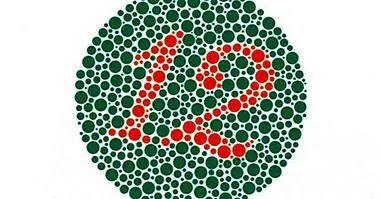Premenstrual dysphoric disorder (PMDD): symptoms, causes and treatment
While it is true that the hormonal changes typical of menstrual cycles have the ability to influence the mood of the woman, there is a condition in which these changes occur very strongly.
We're talking about premenstrual dysphoric disorder , which we will talk about throughout this article; as well as its symptoms, possible causes and treatment guidelines.
- Related article: "The 16 most common mental disorders"
What is premenstrual dysphoric disorder (PMDD)?
Premenstrual dysphoric disorder (PMDD), also known as severe premenstrual syndrome or severe premenstrual disorder , is a condition that only affects women and during which the patient may experience symptoms of severe depression, severe excitability and irritability and tension approximately 7 to 10 days before the start of the menstrual period.
This type of condition is considered an extension, with much more intense symptoms, of premenstrual syndrome (PMS). Despite the fact that both women experience a series of emotional and physical symptoms, in premenstrual dysphoric disorder they are significantly more intense, to the point that they can interfere with personal, social and work functioning.
It is estimated that this condition occurs approximately between 3 and 8% of women who menstruate monthly and regularly. However, there is a great controversy and disagreement around the PMDD . The reason is that there are some professional sectors that defend the idea that in reality, women who suffer from it actually suffer some other type of disorder that is magnified during these days before menstruation.
Symptomatology of PMDD
As previously mentioned, premenstrual dysphoric disorder and premenstrual dysphoric syndrome share a series of symptoms that differentiate them from other alterations related to mood.
However, The main difference between premenstrual dysphoric disorder and premenstrual syndrome is that while the premenstrual syndrome does not significantly interfere with the daily routine of the person, while the PMDD presents a much more intense, marked and debilitating symptomatology.
Below is a list of the symptoms associated with PMDD. However, there is no single and common pattern of symptoms, but these may vary from one woman to another, both in incidence and severity.
Within this symptomatology we can distinguish between those symptoms or manifestations of physical nature and the psychological symptoms of the condition.
1. Psychological symptoms
Among these symptoms we find the following.
- Feelings of acute sadness and despair sometimes accompanied by suicidal ideations.
- Tension.
- Sensation of anxiety .
- Anhedonia or disinterested activity and social relations.
- Sensation of loss of control .
- Fluctuations in the mood.
- Crying periods.
- Panic attacks.
- Persistent irritability .
- Need for excessive intakes or unhealthy foods.
- Alteration of concentration .
- Problems to sleep.
2. Physical symptoms
These are the most common physical symptoms.
- Breast tenderness .
- Headaches
- Abdominal distention and gas.
- Muscle or joint pain.
What causes does it have?
At the moment there is no satisfactory answer to the question of what causes premenstrual dysphoric disorder. However, it is known that the hormonal alterations typical of these periods play an important role in it.
There are a number of factors that facilitate the appearance of this disorder. Some of them are:
- Family history of PMDD.
- Caffeine consumption in great quantities.
- Overweight.
- Alcoholism.
- Lack of physical exercise
In addition, as mentioned above, there are a large number of cases in which the dysphoric disorder menstrual is accompanied by the following psychological conditions:
- Affective emotional disorder.
- Major depression
- Anxious pictures
How can it be diagnosed?
There are no diagnostic tests, neither physical nor psychological, that allow a direct and rapid assessment of premenstrual dysphoric disorder. To make a successful diagnosis, which eliminates the possibility of the person suffering from another type of psychological disorder, it is necessary to make a complete clinical history of the patient. This may be accompanied by a psychiatric evaluation and a series of physical exams such as a complete gynecological exam .
A very useful technique in the diagnosis of this type of condition is that the patient carries out a self-assessment through a calendar or diary of symptoms. In it you can keep a record of the most important symptoms, noting also when they appear and under what circumstances.
The idea is to maintain this diary for at least two menstrual cycles in order to determine the possible causes of the disorder and develop a treatment more adjusted to the specific needs of the patient.
In the same way, this diary will favor a record of the evolution of the person throughout the treatment and may see their results and achievements reflected.
Treatment of PMDD
Once the diagnosis of PMDD is made, it is very likely that the health professional will start a pharmacological treatment with the purpose of reducing the intensity of the symptoms and thus reduce the levels of discomfort and give way to a possible psychological therapy.
This pharmacological therapy may well include the use of antidepressant medications such as fluoxetine or sertraline, which facilitate the reduction of emotional symptoms, as well as fatigue and sleep problems; or resort to contraceptive pills with the intention of get a hormonal balance and, therefore, emotional .
In addition, in some cases nutritional supplements such as tryptophan, vitamin B6 or magnesium have also been effective in treating these same symptoms.
On the other hand, some studies suggest that the use of certain natural remedies such as chasteberry can help to reduce the symptoms of irritability, fluctuations in mood or breast sensitivity.
However, before starting any type of treatment, including the most natural, it is necessary to consult with a medical professional to assess which is the best option for the specific symptomatology of the patient.
Once the pharmacological treatment is initiated, it is highly recommendable to initiate a psychological therapy through which to approach the psychological problems of the premenstrual dysphoric disorder and the possible complications that this provokes in the day to day of the patient.
Finally, changing daily habits for healthier ones will also generate numerous beneficial effects on the person's health. These changes include the following guidelines:
- Balanced diet in which whole foods, fruits and vegetables predominate. As well as a decrease in the consumption of caffeine, energy and alcoholic beverages, sugars and salt.
- Performing aerobic exercise recurrently.
- Modification of sleep habits.



















